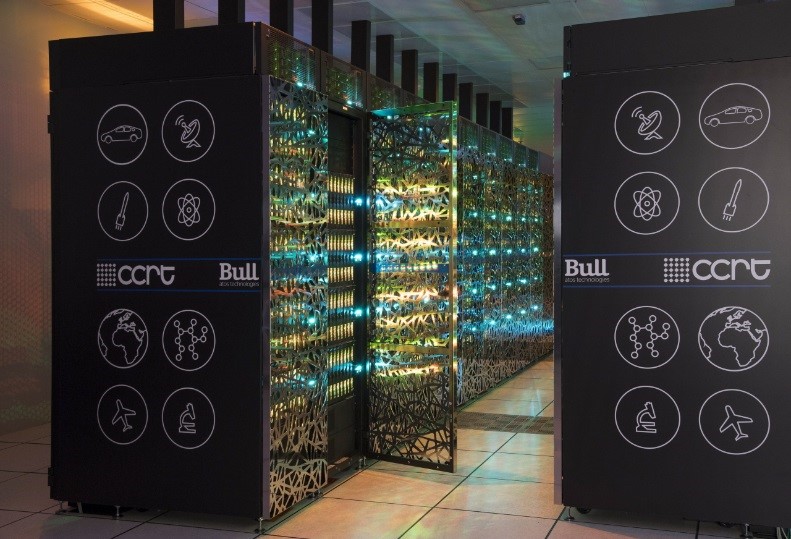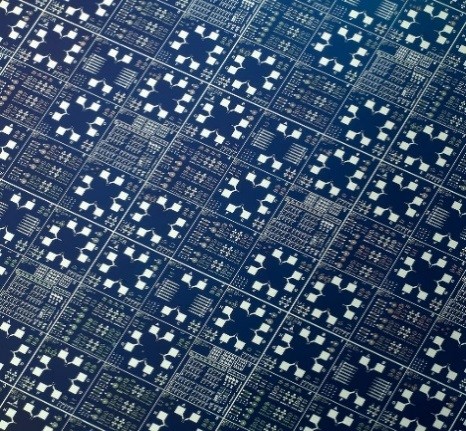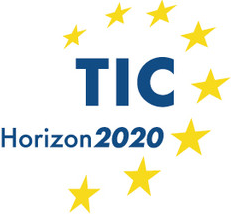The 2017 application proposals for the H2020 programme in the field of ICT[1] identify 11 research and innovation projects involving the CEA. The latter has secured European subsidies to a total of nearly 10.5 million euros. This makes the CEA the leading European beneficiary in 2017.
Among the 11 projects selected for the CEA, four are to receive subsidies in excess of one million euros. These projects bear witness to the diversity of leading edge research conducted by the CEA:

The Cobalt supercomputer at the CCRT (Centre for computing research and technology), commissioned in the spring of 2016, with a performance of the order of 1.5 petaflops. © CEA/DAM
- The MONT-BLANC 2020 project conducted by the LETI and LIST institutes at the CEA, with EU support to the value of 10.13 million euros, 2.05 million euros (or 20.2%) of which are allotted to the CEA, is intended to pave the way for the development of a European processor for the exascale computers of the future, which will be capable of executing one billion billion calculations per second (1018 FLOPS). There are many technical challenges to be met: performance of core processors and computing accelerators, optimization of data exchanges, management of energy consumption, safety and reliability. The project will define a system-on-chip architecture, based upon ARM core processors and incorporating innovative modules for the fulfilment of these issues, and will involve the prototyping of key components.
The 3D-Muse project, also conducted by the CEA-LETI and subsidized to the value of 3.85 million euros, 1.6 million (or 41.8%) of which are allotted to the CEA, is researching the 3D-integration of CMOS transistors with dense interconnections for applications in intelligent sensors which are simultaneously ultra-miniaturized and operate with very low energy consumption. This project will permit the exploitation of a 3D sequential technology, described as "Coolcube", developed by the CEA for More-than-More operation[2], and incorporating CMOS transistors on highly-specialized multiple levels, executed using widely varying technological processes in each stage.
- The 3eFERRO project, with a total budget of 3.99 million euros, 1.46 million euros (or 36.6% of which) is allocated to the CEA, conducted by the Condensed State Physics Department of the Fundamental Research Division - UMR CNRS/CEA, involves the conduct of research into thin layers of ferroelectric materials with a HfO2 and HfZrO2[3] base, and their electrical properties. The project has a two-fold objective: the production of ferroelectric memories for the storage of information, and ferroelectric transistors for logic circuits, both of which are fully-compatible with CMOS technology. This type of memory will specifically be capable of replacing flash memories in devices of the microcontroller (MCU) type, for the web interfacing of everyday devices. One aim is to place European operators in the microelectronics industry in pole position for the development of simple memories with a high storage density, high read/write speeds and low costs.
- The COVR project conducted by the CEA-List institute, which has obtained 1.17 million euros (or 10.95%) from a total grant of 10.71 million euros, is intended to establish protocols which will ensure that collaborative robotic systems, involving a high degree of interaction between humans and robots, are fully compliant with European regulations, in terms of safety and security.

Example of structured designs in CEA clean rooms. © PF.Grosjean/CEA
The H2020 programme for ICT
 The Information and Communication Technologies programme is intended to support European industry throughout the value chain of these technologies (new-generation components and systems, new-generation computing, the Internet of the future, content and information management technologies, advanced interfaces and robotics, key emerging technologies (KET) associated with micro- and nanoelectronics and photonics). |